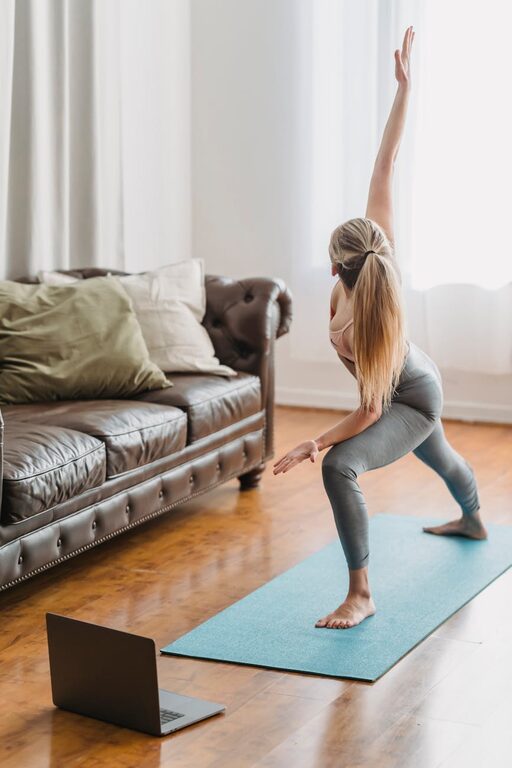Stretching is a simple yet powerful way to improve your overall health and wellness. Whether you want to ease muscle tension, enhance flexibility, or prepare your body for physical activity, stretching at home can fit easily into your daily routine. This beginner’s guide will walk you through the benefits of stretching, important tips, and easy stretches you can do without any special equipment.
Why Stretch at Home?
Stretching helps maintain muscle flexibility and joint mobility, which are essential for everyday movements and overall body function. Doing it at home is convenient, cost-effective, and allows you to set your own pace. You don’t need a gym or fancy tools, just a little space and your own body.
Some key benefits of stretching include:
– Improved flexibility: Helps you move more freely
– Increased blood flow: Boosts circulation and oxygen delivery to muscles
– Reduced muscle tension: Eases stiffness and discomfort
– Better posture: Encourages proper alignment of muscles and joints
– Stress relief: Promotes relaxation and mental calmness
Getting Started: Tips for Safe Stretching
Before we jump into specific stretches, here are some important guidelines to ensure you stretch safely and effectively:
1. Warm Up First
Stretching cold muscles can cause injury. Spend 5 to 10 minutes warming up with light activities such as walking in place, gentle marching, or arm circles.
2. Stretch Slowly and Gently
Avoid bouncing or jerking motions. Move into each stretch gradually until you feel mild tension but no pain.
3. Hold Each Stretch
Aim to hold each stretch for 15 to 30 seconds. This allows your muscles enough time to lengthen and relax.
4. Breathe Deeply
Breathing deeply helps you stay relaxed and enhances the stretch’s effectiveness. Inhale through your nose and exhale through your mouth.
5. Stretch All Major Muscle Groups
Include stretches for your neck, shoulders, arms, back, hips, and legs for balanced flexibility.
Beginner-Friendly Stretches You Can Do at Home
Here are some gentle stretches, organized by body area, that you can easily do in your living room, bedroom, or anywhere in your home.
Neck Stretches
– Neck Tilt: Sit or stand tall. Slowly tilt your head to the right, bringing your ear toward your shoulder. Hold, then switch sides.
– Neck Rotation: Turn your head gently to look over your right shoulder, hold, then repeat on the left.
Shoulder and Arm Stretches
– Shoulder Roll: Roll your shoulders forward and then backward in smooth circles to relieve tension.
– Cross-Body Shoulder Stretch: Bring one arm across your chest and use the opposite arm to gently pull it closer. Hold and switch arms.
Back Stretches
– Child’s Pose: Kneel on the floor with knees wide and toes together. Stretch your arms forward and lower your chest toward the floor. This stretch helps to elongate and relax the spine.
– Seated Spinal Twist: Sit cross-legged or with your legs extended. Place your right hand on your left knee, twist your torso gently to the left, and hold. Repeat on the other side.
Hip and Leg Stretches
– Hip Flexor Stretch: Kneel on your right knee with the left foot in front, forming a 90-degree angle. Push your hips forward to feel a stretch in the front of your right hip. Hold and switch sides.
– Hamstring Stretch: Sit on the floor with one leg extended and the other bent. Reach toward your toes on the extended leg, keeping your back straight. Hold and switch legs.
– Calf Stretch: Stand facing a wall with both hands touching it. Step one foot back and press the heel down to stretch your calf muscles. Switch legs.
Creating a Stretching Routine at Home
Consistency is key when it comes to improving flexibility. Here’s a simple way to incorporate stretching into your daily life:
– Set a time: Choose a regular time of day, perhaps morning or evening, when you can dedicate 10-15 minutes for stretching.
– Create a calm space: Find a quiet corner with enough room to move freely. Use a yoga mat or soft surface for comfort.
– Start small: Begin with 5 to 6 stretches, gradually adding more as you adapt.
– Listen to your body: Stretch only to the point of gentle tension, not pain. Adapt stretches to your comfort level.
Bonus Tips for Success
– Wear comfortable, loose clothing that allows freedom of movement.
– Stay hydrated before and after stretching.
– Pair stretching with light exercise like walking to enhance benefits.
– Use reminders or apps to encourage daily stretching habits.
When to Avoid or Modify Stretching
If you experience sharp pain, dizziness, or feel unwell during stretching, stop immediately. Certain conditions or injuries may require personalized guidance, so consider consulting a fitness professional if you have health concerns.
—
Stretching at home is an accessible way to nurture your body and improve your physical health. Starting with these gentle techniques, you can build a routine that fits your lifestyle and brings lasting benefits. Remember: steady practice, patience, and listening to your body will lead to greater flexibility and well-being over time. Why not start today? Your body will thank you!

